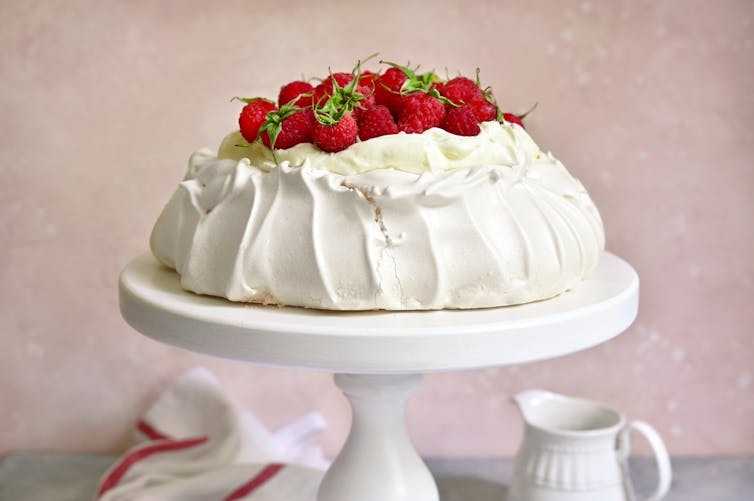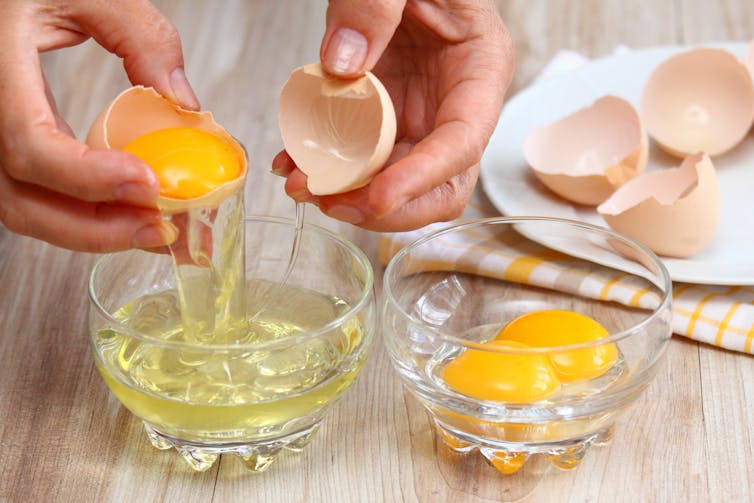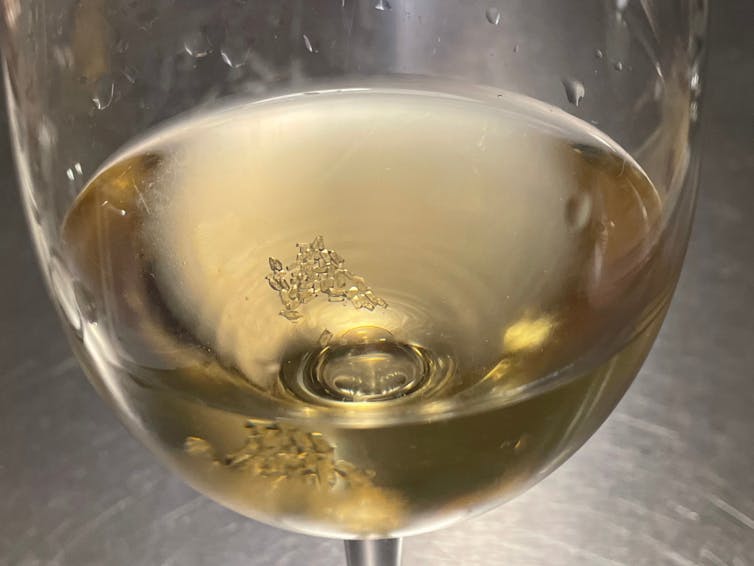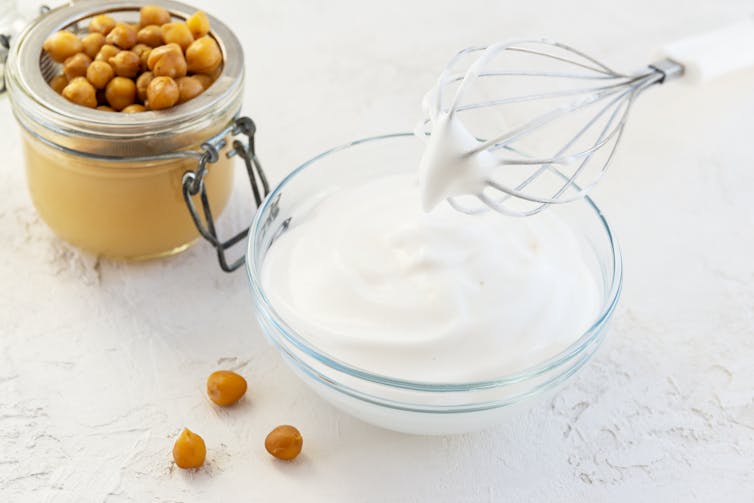January 15 - 21 2023: Issue 567
Summer Stone Fruit: The Peaches, Apricots, Nectarines, Plums + How To Make The Perfect Pavlova According To Chemistry Experts: The Ultimate Summertime Desert
Australian stone fruits are some of the sweetest and juiciest worldwide and are currently in season. January brings the peach, plum, nectarine apricot crops to grocers with an abundance of lovely sweet fruit this Summer. High in Vitamins A and C content, important for growth and development, and for the maintenance of the immune system and good vision in the case of Vitamin A, as well as Niacin which supports the energy required by the brain and digestive system, contributes to DNA repair and even is said to decrease the risk of cardiovascular disease in those already on a statin, these fruits are for Summer and all that comes with it.
Being in season, and cheap, if a case or two can be bought, it may be worthwhile making the chutney recipe available here to add special touches to a few Summer dishes or to store them away for Winter when you want that taste of Summer without having to fly to the northern Hemisphere by simply stewing and freezing. When stewing your fruit we find its best to stew them whole and then cut when using them. Don't add too much sugar when stewing them, you want to enhance, not overpower the fruit taste. Cook the whole fruit until soft but still whole and slightly firm, around 10 minutes depending on the size. If you want something fresh for right now, cutting up and tossing a few of these into your salad mix with some goats cheese and prosciutto makes the mundane magnificent. A few ideas for those who find they have an abundance of these fruits:
Apricot chutney
Ingredients
750g fresh apricots, stones removed and roughly chopped
2 large onions, chopped
3 cloves garlic, crushed
250g raisins
1 tablespoon salt
2 cups brown sugar
2 tablespoons fresh ginger, chopped
1 cinnamon stick
2 chillies, seeded and finely chopped
2 tablespoons tomato puree
500ml brown vinegar
Place all ingredients in a large saucepan and gently heat until sugar dissolves. Simmer gently for about 1 hour until mixture is thick. Stir occasionally to prevent sticking. Pour chutney into sterilised jars (heat these in the oven – and keep lids to seal with once mixture cools). Store in fridge after opening.
Toasted Chickpea and Apricot Salad
Courtesy Mark Bittman
3 cups cooked or canned chickpeas, rinsed, drained, and patted dry
2 teaspoons ground cumin
1 teaspoon ground coriander
1/4 cup olive oil, divided
1 teaspoon grated orange rind
1 1/2 tablespoons white wine vinegar
1 1/2 tablespoons fresh orange juice
1/4 teaspoon kosher salt
1/4 teaspoon freshly ground black pepper
1/2 cup thinly vertically sliced red onion
4 large apricots, pitted and sliced
4 cups baby arugula leaves
1/2 cup (2 ounces) crumbled feta cheese
Preheat oven to 180°. Combine first 3 ingredients in a roasting pan, and drizzle with 2 tablespoons oil, shaking pan to coat beans. Roast at 1800° for 20 minutes, stirring once. Combine remaining 2 tablespoons oil, rind, vinegar, juice, salt, and pepper in a large bowl, stirring with a whisk. Stir in onion and apricots, tossing gently to coat. Add warm beans and arugula, tossing to combine. Sprinkle with cheese.
Summer Nectarines are currently cheap, abundant and very sweet. Rich in vitamins A, C and E they are a great source of dietary fibre and potassium and worth stewing and freezing if you can buy boxes cheap to use through the coming colder months. This week we share a special recipe for special occasions.
Nectarine Frangipane Tart
Ingredients
1 cup (150g) plain flour
1/2 cup (55g) almond meal
1/3 cup (50g) icing sugar mixture
125g chilled butter
1 egg yolk
4 just-ripe nectarines, quartered, stoned, cut into wedges
Caster sugar, to sprinkle
Frangipane
100g butter, softened
1/2 cup (100g) caster sugar
1 egg
1 egg yolk
1 cup (100g) almond meal
1/4 cup (40g) plain flour
To make the pastry, place the flour, almond meal, icing sugar and butter in the bowl of a food processor and process until mixture resembles fine breadcrumbs. Add the egg yolk and process until dough just comes together. Shape into a disc and cover with plastic wrap. Place in the fridge for 30 minutes to rest. Use a rolling pin to roll out the dough on a lightly floured surface to a 3mm-thick disc. Line the base and side of a 22cm-round fluted tart pan with removable base with the pastry and trim the edges. Place in the fridge for 30 minutes to rest.
Preheat oven to 200°C. Line the pastry with baking paper and pastry weights. Bake in oven for 10 minutes. Remove the paper and weights and bake for a further 10 minutes or until golden. Remove from oven and set aside to cool slightly. Reduce oven temperature to 180°C.
To make the frangipane, use an electric mixer to beat the butter and caster sugar until pale and creamy. Add the egg and egg yolk and beat until just combined. Add the almond meal and flour and stir with a wooden spoon to combine. Spoon mixture into the prepared pastry case and use the back of a spoon to smooth the surface. Arrange the nectarines over the frangipane. Sprinkle with caster sugar.
Bake in oven for 30 minutes or until frangipane is set. Remove from oven and set aside in pan to cool completely.
nectarine, (Prunus persica variety nectarina), smooth-skinned peach of the family Rosaceae, known for more than 2,000 years and grown throughout the warmer temperate regions of both the Northern and Southern hemispheres. In tree shape and leaf characteristics the peach and nectarine are indistinguishable, but nectarine fruits look more like plums than peaches because of the smooth skin. The stones and kernels of the two fruits are alike in appearance. Nectarines have red, yellow, or white flesh.
Vitamins: Amounts Per Selected Serving: Vitamin A, 9%; Vitamin C 7.7mg 13%; Vitamin E (Alpha Tocopherol) 1.1mg; 6%; Vitamin K 3.1 mcg 4%; Thiamin 0.0mg 3%; Riboflavin 0.0 mg 2%; Niacin
1.6 mg 8%; Vitamin B6 0.0mg 2%; Folate 7.2mcg 2%; Pantothenic Acid 0.3 mg 3%; Choline 8.9mg; Betaine 0.3mg
Minerals: Calcium 8.6mg1%; Iron 0.4mg 2%; Magnesium 12.9mg 3%; Phosphorus 37.2mg 4%; Potassium 287mg 8%; Zinc 0.2mg 2%; Copper 0.1mg 6%; Manganese 0.1mg 4%
Peach clafoutis
Prepare your fruit by washing and cutting into halves or quarters. Bear in mind you can use any in season stone fruit, nectarines, plums or peaches.
Ingredients
Serves 6
115g (3/4 cup) plain flour, sifted
Pinch of salt
155g (3/4 cup) caster sugar
6 eggs, lightly whisked
3 cups pouring cream - we used 'light' cream as we're already rotund
2 teaspoons vanilla essence
Melted butter, to grease
6 peaches, halved, stone removed, cut into wedges
40g unsalted butter, melted
200ml pouring cream, extra
Icing sugar, to dust
Preheat oven to 180°C. Brush six 375ml (1 1/2-cup) capacity shallow ovenproof dishes or two larger flat dishes with melted butter to lightly grease. Divide the peach among the prepared dishes.
Combine the flour, salt and sugar in a bowl. Whisk together the egg, milk, cream and vanilla in a large jug. Make a well in the centre of the flour mixture. Gradually add the egg mixture, whisking until a smooth batter forms. Cover with plastic wrap and set aside for 30 minutes to rest.
Add the melted butter to the flour mixture. Stir until well combined. Pour over the peach. Bake for 20-25 minutes or until just set. If using larger dishes as we did it will take around 25-30 minutes until they are golden brown and still a bit wobbly in the centre.
Whip the extra cream until soft peaks form. Dust each clafoutis with icing sugar and top with a dollop of the cream to serve.
How to make the perfect pavlova, according to chemistry experts

The pavlova is a summer icon; just a few simple ingredients can be transformed into a beautifully flavoured and textured dessert.
But despite its simplicity, there’s a surprising amount of chemistry involved in making a pavlova. Knowing what’s happening in each step is a sure-fire way to make yours a success.
So exactly what does it take to make the perfect pavlova? Let us break it down for you.
Egg Whites
Egg white is basically a mixture of proteins in water. Two of these proteins, ovalbumin and ovomucin, are the key to forming a perfect foamy meringue mixture.
Whipping the egg whites agitates the proteins and disrupts their structure, causing them to unfold so the protein’s interior surface is exposed, in a process known as denaturing. These surfaces then join with one another to trap air bubbles and turn into a stable foam.
Egg yolk must be completely removed for this process to work. Yolk is mostly made of fat molecules, which would destabilise the protein network and pop the air bubbles. It only takes a trace amount of fat, or even just a greasy bowl, to disrupt foam formation.
You should always whip your egg whites in a clean glass or metal bowl. Plastic bowls are more likely to hold leftover grease.

Sugar
A traditional pavlova uses sugar – a lot of it – to provide texture and flavour. The ratio of sugar to egg white will differ between recipes.
The first thing to remember is that adding more sugar will give you a drier and crispier texture, whereas less sugar will lead to a softer and chewier pavlova that won’t keep as long.
The second thing is the size of the sugar crystals. The larger they are, the longer they’ll need to be whipped to dissolve, and the greater the chance you will overwork the proteins in your meringue. Powdered icing sugar (not icing mixture) is preferable to caster or granulated sugar.
If you do happen to overbeat your meringue (which may end up looking clumpy and watery) you can try to save it by adding another egg white.
Acid
Many pavlova recipes call for adding cream of tartar or vinegar. Cream of tartar is also known as potassium hydrogen tartrate, which you may have seen in the form of crystals at the bottom of a wine glass.
These acids act as a stabilising agent for the meringue by aiding in the unfolding of the egg white proteins. More isn’t always better, though. Using too much stabiliser can affect the taste and texture, so use it sparingly.

Heat
Cooking a pavlova requires a very slow oven for specific chemical reasons. Namely, egg white proteins gel at temperatures above 60℃, setting the meringue.
At higher temperatures a chemical reaction known as the Maillard reaction takes place in which proteins and sugars react to form new flavourful compounds. We can thank the Maillard reaction for many delicious foods including roasted coffee, toast and seared steak.
However, excessive Maillard reactions are undesirable for a pavlova. An oven that’s too hot will turn your meringue brown and give it a “caramelised” flavour. Recipes calling for pavlova to be left in the oven overnight may actually overcook it.
At the same time, you don’t want to accidentally undercook your pavlova – especially since uncooked eggs are often responsible for food poisoning. To kill dangerous bacteria, including salmonella, the pavlova’s spongy centre must reach temperatures above 72℃.
An alternative is to use pasteurised egg whites, which are briefly heated to a very high temperature to kill any pathogens. But this processing may also affect the egg white’s whippability.
Substitute Ingredients
People love pavlova, and nobody should have to miss out. Luckily they don’t have to.
If you want to limit your sugar intake, you can make your meringue using sweeteners such as powdered erythritol or monk fruit. But, if you do, you may want to add some extra stabiliser such as cornflour, arrowroot starch, or a pinch of xanthan gum to maintain the classic texture.
Also, if you want a vegan pavlova, you can turn to the chickpea instead of the chicken! Aquafaba – the water collected from tinned or soaked beans – contains proteins and carbohydrates that give it emulsifying, foaming and even thickening properties. Egg-free pavlova recipes typically replace one egg white with about two tablespoons of aquafaba.

And for those of you who don’t do gluten, pavlova can easily be made gluten-free by using certain stabilising agents.
All that’s left is to get creative with your toppings and decide what to do with those leftover yolks!![]()
Nathan Kilah, Senior Lecturer in Chemistry, University of Tasmania and Chloe Taylor, Research Fellow - PhD candidate, University of Tasmania
This article is republished from The Conversation under a Creative Commons license. Read the original article.